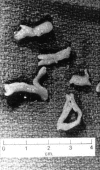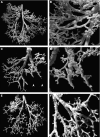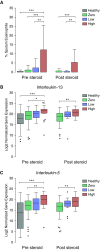Autopsy and Imaging Studies of Mucus in Asthma. Lessons Learned about Disease Mechanisms and the Role of Mucus in Airflow Obstruction
- PMID: 30431352
- PMCID: PMC6322032
- DOI: 10.1513/AnnalsATS.201807-485AW
Autopsy and Imaging Studies of Mucus in Asthma. Lessons Learned about Disease Mechanisms and the Role of Mucus in Airflow Obstruction
Abstract
Autopsy studies in fatal asthma have clearly documented the central role of airway plugging with pathologic mucus in the pathophysiology of death from asthma, but the role of mucus plugs in chronic severe asthma has been less well understood. Recently, multidetector computerized tomography imaging of the lungs has emerged as a valuable method to visualize mucus plugs in asthma. These multidetector computerized tomography data have revealed mucus plugs as a common occurrence in severe forms of asthma. In addition, an image-based mucus plug scoring system shows that mucus plugs are strongly associated with measures of airflow obstruction and with biomarkers of type 2 cytokine and eosinophilic inflammation. These data provide a rationale for treating airflow obstruction in severe asthma with mucolytics, and they also raise the possibility that treatments that target type 2 inflammation may decrease mucus plugs in asthma.
Keywords: eosinophil peroxidase; eosinophils; mucins; type 2 inflammation.
Figures








References
-
- Lang DM, Simon RA, Mathison DA, Timms RM, Stevenson DD. Safety and possible efficacy of fiberoptic bronchoscopy with lavage in the management of refractory asthma with mucous impaction. Ann Allergy. 1991;67:324–330. - PubMed
-
- Sheffer AL.editor. Fatal asthma. In: Lung biology in health and disease. Vol. 115. Florida: CRC Press; 1998. pp. 1–640.
-
- Perry SF, Purohit AM, Boser S, Mitchell I, Green FH. Bronchial casts of human lungs using negative pressure injection. Exp Lung Res. 2000;26:27–39. - PubMed

